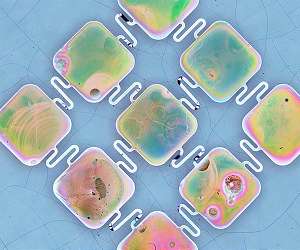Fossil fuel giant BP revealed Wednesday it was taking a 40.5 percent stake in an Australian energy project being billed as one of the world’s largest renewable power stations.
BP said it would operate the $36 billion “Asian Renewable Energy Hub”, an array of solar and wind facilities sprawled over 6,500 square kilometres (2,509 square miles) of Australia’s sparsely populated west coast.
The project is expected to have a generating capacity of 26 gigawatts, exceeding China’s vast Three Gorges hydroelectric dam — which is by some measures the world’s largest existing power station.
It would also produce 1.6 million tonnes of green hydrogen each year, with plans to export much of this to major Asia-Pacific markets such as Japan and South Korea.
The hub was first proposed in 2014 as a large-scale wind and solar renewable energy project, and has been slowly going through the process of site surveys and approvals ever since.
The arrival of a major player like BP — and the election of a new pro-renewables Australian government — is likely to give the project a shot in the arm.
Anja-Isabel Dotzenrath, BP’s executive vice president of gas and low carbon energy, said the company believed that “Australia has the potential to be a powerhouse in the global energy transition”.
The project is one of several large renewable power proposals in development across sun-kissed Australia, including technology billionaire Mike Cannon-Brookes’ Sun Cable, which aims to become the world’s biggest solar energy infrastructure network.
Australia is currently one of the world’s top three fossil fuel exporters, a position that has come under increased scrutiny due to the impacts of climate change.
But the Western Australia project will still have to overcome significant regulatory hurdles.
It was dealt a blow last year when Australia’s previous pro-coal environment minister Sussan Ley deemed the project “clearly unacceptable” because of an impact on migratory birds.
The Clean Energy Council criticised the decision at the time, saying it was inconsistent with the treatment given to coal projects.
A BP spokesperson told AFP these environmental concerns were “being considered by the project design team” before a revised proposal would be submitted to the new centre-left government.
Green groups including the Australian Conservation Foundation and Greenpeace welcomed the news BP was investing in the renewable energy hub, with the caveat that the project should not threaten biodiversity.
“It has to stand up environmentally,” the Australian Conservation Foundation’s Elizabeth Sullivan said.
Sullivan said there was huge potential for Australia’s renewables export industry — bringing tens of billions to the economy — but time was of the essence.
“International investors are struggling to see whether Australia is committed to renewables or if it’s committed to fossil fuels,” she said.
“The world is not going to wait for us”.
Britain-based BP has vowed to become cleaner and greener company, but remains heavily invested in oil and gas projects around the world.
mmc/arb/dva
Related Links
All About Solar Energy at SolarDaily.com
|
We need your help. The SpaceDaily news network continues to grow but revenues have never been harder to maintain. With the rise of Ad Blockers, and Facebook – our traditional revenue sources via quality network advertising continues to decline. And unlike so many other news sites, we don’t have a paywall – with those annoying usernames and passwords. Our news coverage takes time and effort to publish 365 days a year. If you find our news sites informative and useful then please consider becoming a regular supporter or for now make a one off contribution. |
||
|
SpaceDaily Contributor $5 Billed Once credit card or paypal |
SpaceDaily Monthly Supporter $5 Billed Monthly paypal only |
|

![]()
Sponge-like solar cells could be basis for better pacemakers
Chicago IL (SPX) Jun 10, 2022
Holes help make sponges and English muffins useful (and, in the case of the latter, delicious). Without holes, they wouldn’t be flexible enough to bend into small crevices, or to sop up the perfect amount of jam and butter.
In a new study, University of Chicago scientists find that holes can also improve technology, including medical devices. Published in Nature Materials, the paper describes an entirely new way to make a solar cell: by etching holes in the top layer to make it porous. The innovat … read more
